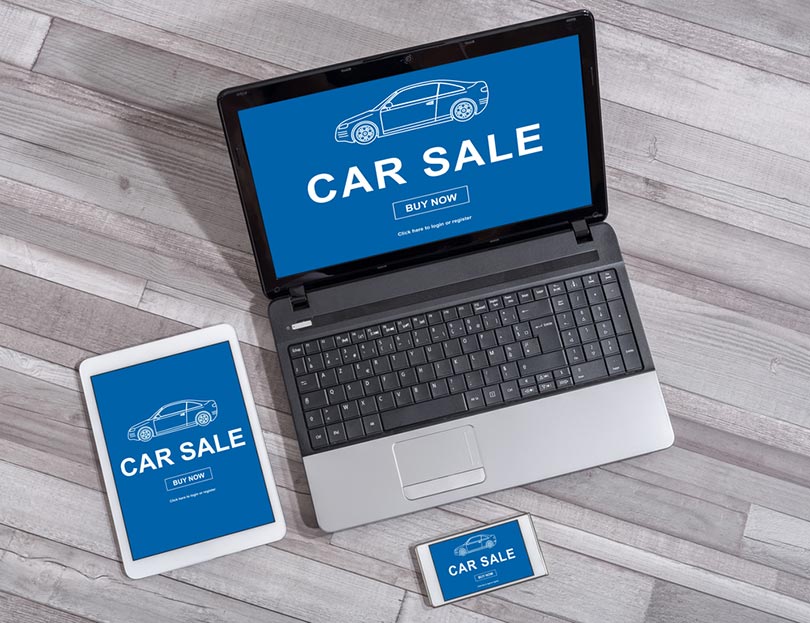How Do Car Leases Work? Pros, Cons & FAQs
-
Pete Ortiz
- Last updated:

A car lease is similar to renting in that the lessee never owns the vehicle. It requires some payment upfront, plus regular monthly repayments, and may have the option at the end of the lease to buy the car or to hand it back to the leasing company. A lease may be a beneficial option for drivers that like to drive a new car every few years.
However, there are restrictions placed on most car leases, and you do need to check these before entering into the agreement. If you cover a lot of miles, for example, a car lease may prove prohibitively expensive. Leasing alternatives include buying a new car on credit, taking out a separate auto loan, or buying a used car that will cost less.
 How Does It Work?
How Does It Work?
A car lease is effectively a long-term rental agreement, whereby a driver rents or leases a car from a finance company that owns that car. The lease is determined for a set period, typically between 2 and 4 years, and the lessee pays an up-front cost as well as regular monthly payments, in order to use the car. The amount paid is ultimately determined by the expected depreciation of the vehicle during the time that the lessee keeps it, with interest and fees added. Paying a larger fee up-front may enable the lessee to make smaller monthly repayments.
Because the lessee leases the vehicle from the legal owner, they never really own the car. When the lease comes to term, there may be an option to pay an additional sum and keep the car. Alternatively, it is possible to hand the car back and enter into a new lease agreement for a new car, or hand the car back and be left with no vehicle.

What Are the Different Fees and Restrictions with a Car Lease?
Different lessors have different rules and restrictions with their agreements, and there may be several different agreements for a driver to choose from. Options include:
- Lease term – The lease term is how long the lease agreement lasts and how long the lessee keeps the car before having to pay the remaining value and keep the car or terminate the lease agreement. Leases typically last between 2 and 4 years.
- Upfront payment – The upfront payment is the amount that the lessee pays the lessor before taking delivery of the car. The initial payment is usually equivalent to between 6 and 12 months of premiums but this does depend on the lessor. Paying a higher upfront payment may enable the lessee to reduce the size of their monthly payments.
- Monthly payments – Throughout the period of the lease, the lessee has to pay a monthly fee to continue using the car.
- Term payments – Once the lease comes to term, the lessee has the option to keep the car, replace it with a new one, or hand it back and be left with no car. Some lease agreements charge a fee at the end of the lease agreement, so lessees do need to check the lease agreement to avoid being hit with unexpected charges.
- Interest rate – The interest rate, or money charge, is where the finance company makes its money and is a premium that is added to the lease. This is unavoidable but different companies offer different rates. Lessees with better credit scores may be able to access lower rates than those with average scores.
- Mileage allowance – Most lessors impose a mileage restriction, usually around 12,000 miles a year or 1,000 miles a month. If the lessee goes above this mileage, there will be a penalty applied per mile over the limit. Lessees should be realistic about the distance they will cover in the car in order to avoid potentially hefty prices. It may be possible to agree to a higher mileage allowance at the beginning of the lease. This will increase the premium price but work out cheaper than paying an excess mileage penalty.
Who Uses Car Leases and What Are the Alternatives?
Car leases provide access to new vehicles for those that can’t afford or don’t want to pay the full price of buying a new car. They may enable a driver to access the latest and best model of a car, with all the added extras, rather than a base model. While they are beneficial to some drivers, there are alternatives to leasing:
- Used car lease – Some finance companies do offer leases on used cars. Because the cars are less expensive to buy and will suffer less depreciation, the cost is usually lower, but the lessee will normally be liable for more ongoing costs such as repairs and services.
- Buying a used car – Used car financing may work out to have lower monthly costs than leasing a new car and has the added benefit that the buyer owns the car and doesn’t have to hand it back.
- New car credit – It is possible to buy a new car using credit or financing options offered by the seller. Payments can be spread over a similar period to a lease agreement and this method does require an initial and monthly payment, which will be higher than a lease agreement on the same make and model of car, but the buyer owns the car once the credit has been repaid.
- Personal loan – A personal loan can be used to finance the purchase of a new or used car. Lessees may be able to get a better deal from a personal loan than using other methods, although this is usually only the case for those with good credit ratings. Using a personal loan to buy a car means that the driver will own the car.

- Low monthly payments – Compared to buying the same make and model of car but using finance, a car lease will have lower monthly repayments compared to a finance agreement.
- Smaller initial payment – Similarly, the lessor will usually take a smaller initial payment, equivalent to between 1 and 12 monthly repayments, compared to buying, when financers usually request at least 10% of the car’s value.
- Get a better car – It may be possible to get a better model than to finance a new car purchase, even if the individual couldn’t afford to buy that same model.
- Access to a new car every few years – Car leases usually last between 2 and 4 years, and once the lease comes to term, it should be possible to hand the car back and get a brand new one with a new lease agreement. This gives the lessee access to a brand-new car every few years.
- No hassle selling and buying your car – If a driver buys a new or used car and intends to upgrade every few years, it means selling the existing car and buying a new one. The process of upgrading to a new lease model is easier and more convenient.
- Never own the car – The lessee never owns the car and will continue to drive a car that is owned by the financing company.
- It costs more in the long run – Although car lease fees are lower than finance fees, assuming the same make and model of car, it costs more to keep upgrading to a new vehicle every few years and for the lessee to ensure that they always have access to a car.
- Terminating a lease can be expensive – If the lessee decides they no longer need a car and wants to return the vehicle and terminate the agreement early, there are usually sizeable penalties associated with this.
- There are many restrictions – The lessee does not own the car which means that they cannot upgrade or make changes to the vehicle without explicit permission from the finance company or without paying a large penalty at the end of the lease agreement. There are also penalties for lessees that go over a certain mileage and if there is excessive wear and tear to the vehicle.
Frequently Asked Questions (FAQs)
Do you need good credit to get a car lease?
Typically, leasing is available for most credit scores, but people with better credit scores will have access to lower rates and better deals. For those with bad credit, it may be difficult to find a car lease at all. Some finance companies offer car leases on used cars and these can be easier to obtain for drivers with bad credit.

Do I need insurance to lease a car?
The leasing company will provide the car, but it is the responsibility of the driver to ensure that they have insurance as this will not be provided by the leasing company and is a legal requirement to drive the car.
Is leasing the same as renting?
Leasing is essentially the same thing as renting a property. The lessee never owns the property and pays an upfront fee and monthly payments to continue using the car or property.

How much will monthly payments be?
The monthly payment value is determined by a number of factors. The lessor takes the initial value of the vehicle and the likely final value of the vehicle at the end of the lease term, taking into account depreciation. They charge this amount to the lessee plus interest, money charges, and other fees. The lessor subtracts the upfront payment from this value and then divides it between the number of months that the lessee will make payments to determine the monthly fee.
The fee should be outlined before you take on a car lease and it shouldn’t deviate from the set amount except for the charging of any penalties or agreed on extra fees.
 Conclusion
Conclusion
A car lease can provide lessees with access to a brand-new car that they wouldn’t be able to afford to buy outright. It also means that the lessee can drive a new car every 2–4 years. However, this type of finance agreement means that the driver never owns the car and there are many restrictions and potential penalties that might be levied against the lessee. Driving and continuously upgrading to a new car lease every few years will ultimately work out more expensive than buying a new car and replacing it over the same time period.
Featured Image Credit: Olha Tytska, Shutterstock
Contents

 How Does It Work?
How Does It Work?